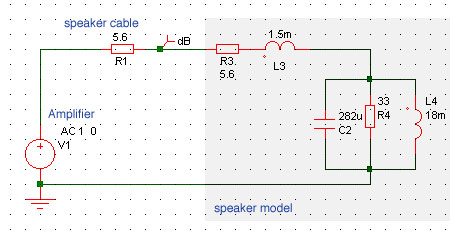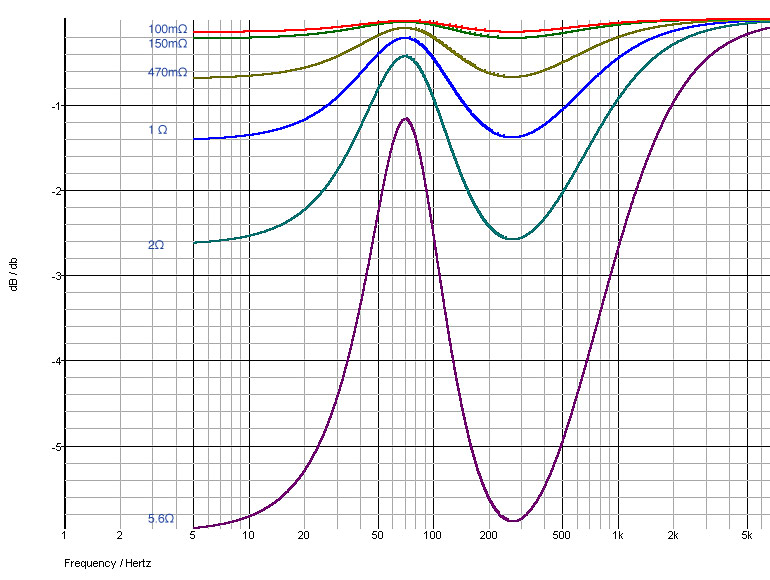
Inveterate meddling #492: Amp output Z and speaker cables
Bored of the holy wars on whether or not cables affect sound we present one way in which a poor choice of speaker cables (or amplifier!) can significantly spoil the delivered frequency response in-room.
Using nothing but basic Physics here's a rather graphic illustration of the effect of cable resistance based on a simple model of an 8ohm, single driver speaker, like this:

The amplifier is a perfect voltage source; the speaker cable is R1, a pure resistance; the 'dB' probe is the response at the speaker +ve terminal. The speaker model comprises the voicecoil DC resistance and inductance, and some lumped terms which approximate the reactance of a driver in a sealed box. So, step the resistance of the cable from 0.1ohms to 5.6ohms (= the driver's DC resistance) and unsurprisingly you get up to 6dB of ripple:

Of course in practice this would be greatly complicated by the effect of the crossover, and more drivers; and by motional-impedance reflected from cabinet resonances at LF.
Observations:
As a friend put it nicely, "...Not the whole story explaining amplifier differences by any means, but it pays to eliminate to obvious before embracing, how can I say this, more faith based explanations. "
© 2009 the twisted pair